Madecassoside: The Gold Standard for Skin Regeneration & Wound Healing
1. What is Madecassoside?
Madecassoside, a potent pentacyclic triterpenoid saponin, is the primary bioactive constituent derived from the medicinal herb Centella asiatica (Gotu Kola). It is scientifically recognized as a key modulator of extracellular matrix (ECM) synthesis, critically influencing collagen deposition, fibroblast proliferation, and inflammatory pathways. This molecule is the cornerstone of Centella asiatica‘s renowned regenerative and reparative properties.
2. Source, Chemical Properties & Identification
-
Botanical Source: Centella asiatica L. Urban (Apiaceae family)
-
Chemical Nature: Oleanane-type triterpenoid saponin glycoside.
-
CAS Number: 34540-22-2
-
Molecular Formula: C<sub>48</sub>H<sub>78</sub>O<sub>20</sub>
-
Molecular Weight: 975.13 g/mol
-
EINECS: 252-067-2
-
Key Features: High polarity, typically white to off-white crystalline powder. Soluble in water, methanol, and DMSO; insoluble in non-polar solvents.
3. Benefits & Applications: Skin Health & Systemic Effects
-
Skin Regeneration & Anti-Aging:
-
Stimulates Collagen Synthesis: Significantly upregulates Collagen Type I and III production via TGF-β/Smad pathway activation, improving skin firmness and elasticity.
-
Enhances Fibroblast Activity: Promotes fibroblast proliferation and migration, crucial for tissue repair and ECM remodeling.
-
Powerful Antioxidant: Scavenges free radicals (ROS), mitigating oxidative stress-induced photoaging and glycation damage.
-
Anti-Inflammatory: Inhibits key pro-inflammatory cytokines (TNF-α, IL-6, IL-1β) and enzymes (COX-2, iNOS), reducing redness and irritation.
-
Wound Healing Acceleration: Enhances angiogenesis (new blood vessel formation), granulation tissue development, and re-epithelialization. Clinically proven for burns, surgical wounds, diabetic ulcers, and scar management (hypertrophic, keloid).
-
-
Systemic Health Benefits (Research Indicates):
-
Neuroprotective: May support cognitive function and protect neurons against oxidative stress and amyloid toxicity.
-
Venotonic: Improves microcirculation and vascular integrity, potentially aiding chronic venous insufficiency.
-
Anxiolytic Potential: Modulates GABAergic pathways, showing promise in reducing anxiety symptoms in some studies.
-
-
Daily Intake & Safety:
-
Topical Use: Generally well-tolerated in cosmetic formulations (0.1% – 2% concentration). Patch testing recommended for sensitive skin.
-
Oral Intake (As Centella Extract): Typical standardized extract doses range from 60mg to 180mg daily (often providing 20-40% total triterpenoids, including Madecassoside and Asiaticoside). Consult a healthcare professional before oral supplementation.
-
Side Effects: Topical use rarely causes mild irritation or contact dermatitis. Oral intake may cause GI upset, nausea, or drowsiness in some individuals. Contraindicated during pregnancy/breastfeeding without medical advice. Potential interactions with sedatives or diabetic medications.
-
4. Shaanxi Zhonghong Investment Technology Co., Ltd.: Your Trusted Source
Shaanxi Zhonghong Investment Technology Co., Ltd. is a premier high-tech enterprise vertically integrated across agile R&D, collaborative innovation, integrated manufacturing, and global marketing. We specialize in serving the chemical, materials, and life science sectors, with core expertise in the extraction, isolation, purification, and commercial application of potent plant bioactives.
-
Core Product Portfolio: Premium Natural Plant Extracts, Cosmetic Active Ingredients, Nutraceutical & Pharmaceutical Intermediates, Natural Plant Pigments, Natural Sweeteners.
-
Scientific Prowess (R&D Barriers):
-
Strategic alliances with 5 leading universities, establishing joint research laboratories.
-
Proprietary portfolio of 20+ patented technologies.
-
Maintains a globally exclusive compound library for novel discovery.
-
-
Manufacturing Excellence:
-
Equipped with cutting-edge analytical instrumentation: HPLC (High-Performance Liquid Chromatography), NMR (Nuclear Magnetic Resonance Spectrometry), GC-MS.
-
Implements stringent quality control protocols exceeding industry standards, guaranteeing purity levels >20% above typical benchmarks.
-
-
Global Reach & Customization:
-
Extensive supply chain network serving 80+ countries across Asia, Europe, and the Americas.
-
Proven capability to deliver bespoke ingredient solutions for multinational pharmaceutical corporations, nutraceutical brands, cosmetic innovators, and research institutions.
-
-
Industry Leadership: 28 years of unparalleled expertise in sourcing, developing, and manufacturing high-purity bioactive compounds.
5. Product Specifications: Rigorous Quality Assurance
| Category | Parameter | Specification (Limit) | Test Method |
|---|---|---|---|
| Pesticides | Aldrin+Dieldrin | ≤ 0.05 mg/kg | GC-ECD |
| Chlordane (Total) | ≤ 0.05 mg/kg | GC-MS | |
| DDT (Total) | ≤ 0.1 mg/kg | GC-ECD | |
| Hexachlorobenzene | ≤ 0.1 mg/kg | GC-ECD | |
| Quintozene | ≤ 0.1 mg/kg | GC-ECD | |
| Heavy Metals | Arsenic (As) | ≤ 2.0 mg/kg | ICP-MS / AAS |
| Lead (Pb) | ≤ 3.0 mg/kg | ICP-MS / AAS | |
| Cadmium (Cd) | ≤ 1.0 mg/kg | ICP-MS / AAS | |
| Mercury (Hg) | ≤ 0.1 mg/kg | ICP-MS / CVAAS | |
| Microbiology | Total Plate Count | ≤ 1000 CFU/g | USP <61> |
| Yeast & Mold | ≤ 100 CFU/g | USP <61> | |
| Escherichia coli | Absent in 1g | USP <62> | |
| Salmonella spp. | Absent in 10g | USP <62> | |
| Staphylococcus aureus | Absent in 1g | USP <62> | |
| Pseudomonas aeruginosa | Absent in 1g | USP <62> |
6. Advanced Production Process
Our Madecassoside is produced under strict cGMP conditions:
-
Sourcing: Premium Centella asiatica biomass, sustainably cultivated and botanically authenticated.
-
Extraction: Optimized solvent extraction (e.g., ethanol/water) or supercritical fluid extraction (SFE) using CO<sub>2</sub> for enhanced selectivity.
-
Primary Purification: Macroporous adsorption resin chromatography for initial enrichment and removal of pigments/sugars.
-
High-Resolution Purification: Preparative HPLC or Counter-Current Chromatography (CCC) for isolation of Madecassoside at >95% purity.
-
Crystallization: Final purification and solid-state standardization.
-
Drying: Lyophilization (Freeze-drying) or spray drying under controlled conditions to ensure stability.
-
Blending & Standardization: Precise adjustment to meet specified potency (e.g., 95%, 98%).
7. Diverse Application Scenarios
-
Cosmeceuticals: Anti-aging serums/creams, wound healing ointments, scar reduction gels, post-procedure recovery formulations, sensitive skin soothing products, sun care (after-sun repair).
-
Pharmaceuticals: Topical drugs for burns, ulcers (diabetic, venous), surgical wound management, anti-scarring agents. Potential in neuroprotective and anxiolytic drug development.
-
Nutraceuticals: Functional ingredients in oral supplements targeting skin health, cognitive support, vascular function, and antioxidant defense (subject to regional regulations).
-
Advanced Biomaterials: Incorporation into wound dressings, tissue engineering scaffolds, and drug delivery systems for sustained release.
8. Stringent Quality Control (QC)
Zhonghong’s QC paradigm integrates Pharmaceutical Quality by Design (QbD) principles. Identity confirmation is rigorously performed via HPLC-UV co-chromatography against USP/EP reference standards and FTIR (Fourier Transform Infrared Spectroscopy). Potency and purity are quantified using validated HPLC-UV or UHPLC-MS/MS methods, ensuring precise Madecassoside content (>95% or as specified) and low levels of related compounds (e.g., Asiaticoside). Residual solvents are monitored per ICH Q3C guidelines using Headspace GC-FID/GC-MS. Microbiological safety adheres strictly to USP <60> / EP 5.1.4 specifications. Heavy metal analysis employs ICP-MS for unparalleled sensitivity. Stability studies (ICH Q1A(R2)) under accelerated (40°C/75% RH) and long-term conditions (25°C/60% RH) guarantee shelf-life and storage recommendations. Full traceability and certificate of analysis (CoA) compliance are mandatory for every batch.
9. Secure Packaging & Global Logistics
-
Primary Packaging: High-grade double polyethylene bags within food-grade HDPE drums (25kg) or aluminum foil bags (1kg, 5kg). Nitrogen flushing for oxygen-sensitive lots.
-
Secondary Packaging: Robust fiberboard cartons meeting ISTA standards.
-
Labeling: Compliant with destination regulations (INCI, CAS, Batch #, Expiry, GHS).
-
Storage: -20°C for long-term master stocks; 2-8°C or controlled room temperature (CRT) per stability data for distribution.
-
Logistics: Expertise in global cold chain and ambient shipping. Comprehensive documentation (Packing List, Commercial Invoice, CoA, SDS, Certificate of Origin). Efficient customs clearance support.
10. Health Mechanisms, Applications & Research Frontiers
-
Mechanism of Action: Madecassoside exerts its effects through:
-
TGF-β/Smad Pathway Activation: Driving collagen I/III and fibronectin synthesis.
-
MAPK/NF-κB Pathway Inhibition: Suppressing pro-inflammatory cytokine production (TNF-α, IL-6, IL-1β, COX-2, iNOS).
-
Antioxidant Enzyme Induction: Enhancing SOD, CAT, GPx activity.
-
PI3K/Akt Pathway Modulation: Promoting cell survival and angiogenesis.
-
-
Industrial Applications & Innovation: Beyond cosmetics/pharma, research explores its use in functional textiles (wound contact layers), bioactive coatings for medical devices, and veterinary medicine. Zhonghong focuses on green chemistry optimization (reducing solvent use, SFE) and novel delivery systems (liposomes, nanoemulsions) to enhance bioavailability and efficacy.
-
Research Frontiers & Challenges:
-
Clinical Translation: Larger, robust human trials for oral neuroprotection and chronic disease applications.
-
Bioavailability Enhancement: Overcoming poor oral absorption via novel formulations.
-
Synergistic Combinations: Researching potentiation with other bioactives (e.g., growth factors, other triterpenes).
-
Synthetic Biology: Exploring biotechnological production (e.g., yeast fermentation) for sustainability and scalability. Challenges include cost-effective high-yield purification and long-term safety data for novel applications.
-
11. Frequently Asked Questions (FAQ)
-
Q1: Is Madecassoside better than Asiaticoside? Both are key Centella triterpenes with overlapping but distinct profiles. Madecassoside is often highlighted for superior anti-inflammatory and collagen-stimulating effects, particularly in scarless wound healing research. Asiaticoside may be more prominent in initial fibroblast activation. Optimal results often come from combined triterpene fractions.
-
Q2: What’s the recommended concentration in skincare? Effective concentrations typically range from 0.1% to 2%, depending on the formulation type (serum, cream, gel) and target benefit (anti-aging, wound healing, soothing).
-
Q3: Can Madecassoside be used orally? While research shows systemic benefits, oral use should be under medical supervision using standardized Centella extracts, not isolated Madecassoside raw material. Dosage depends on the extract standardization.
-
Q4: Is it safe during pregnancy/breastfeeding? Topical use at cosmetic concentrations is generally considered safe. Oral intake of Centella extracts is not recommended during pregnancy/breastfeeding without explicit medical advice due to limited safety data.
-
Q5: Does it interact with medications? Potential interactions exist with sedatives (CNS depressants) and diabetes medications (may enhance blood sugar lowering). Consult a doctor before oral use if taking any medication.
-
Q6: What’s the solubility of Madecassoside? It is water-soluble, which is advantageous for formulating aqueous serums, gels, and lotions. Solubility can be enhanced in glycols/glycerin.
12. Where to Buy High-Purity Madecassoside?
Source premium, research-grade Madecassoside directly from the manufacturer:
-
Contact: Mr. Liao Daohai, Business Development
-
Email: liaodaohai@gmail.com
-
Website: https://www.aiherba.com (Explore our full catalog of bioactive compounds)
-
Capability: Request custom concentrations (95%, 98%), formulations (liquid, powder), CoA samples, and bulk quotations.
13. Conclusion
Madecassoside stands as a scientifically validated, multi-functional bioactive with exceptional potential in dermatological repair, anti-aging cosmeceuticals, and advanced wound management. Its potent collagen synthesis stimulation, anti-inflammatory, and antioxidant mechanisms deliver tangible benefits. As demand for evidence-based natural actives surges, partnering with a manufacturer possessing robust scientific infrastructure, stringent quality control (exceeding pharmacopeial standards), and 28 years of specialized expertise – like Shaanxi Zhonghong Investment Technology Co., Ltd. – is paramount for securing a reliable, high-performance supply chain. Continuous research promises even broader therapeutic applications for this remarkable triterpenoid.
14. References (Illustrative – Consult Zhonghong for Full Dossiers)
-
Bylka W, et al. (2013). Centella asiatica in dermatology: an overview. Phytother Res.
-
Lee JH, et al. (2006). Asiaticoside induces human collagen I synthesis through TGFβ receptor I kinase (TβRI kinase)-independent Smad signaling. Planta Med.
-
Liu M, et al. (2008). Madecassoside isolated from Centella asiatica herbs facilitates burn wound healing in mice. Planta Med.
-
Pangestuti R, et al. (2019). Neuroprotective properties of Centella asiatica (L.) Urb. and its active constituents: A review. Front Aging Neurosci.
-
USP-NF Monographs. ICH Quality Guidelines (Q1A(R2), Q3C, Q2(R1)). European Pharmacopoeia. (General Quality Standards Frameworks).

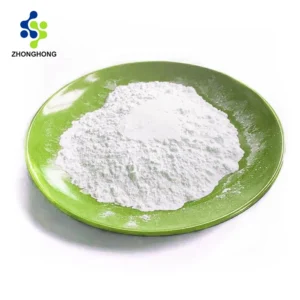
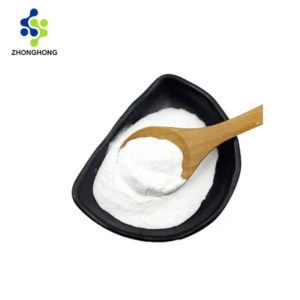
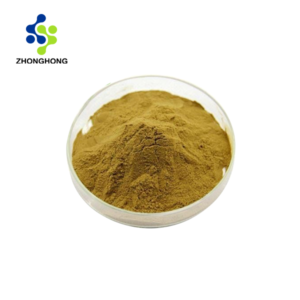
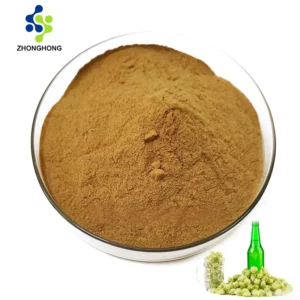
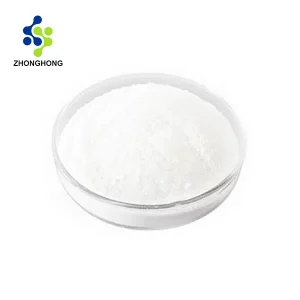
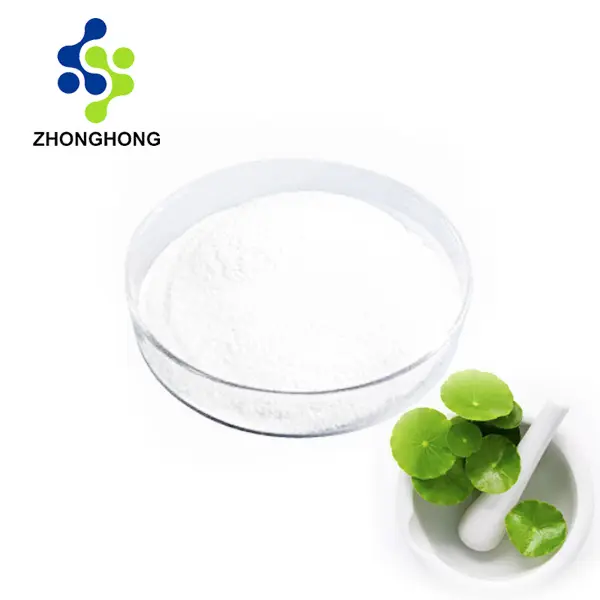
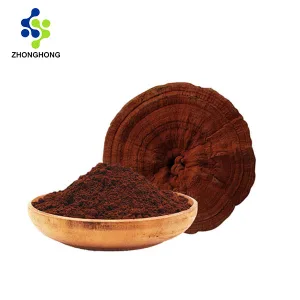
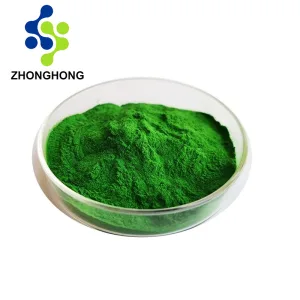
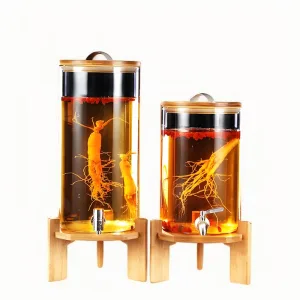
Reviews
There are no reviews yet.